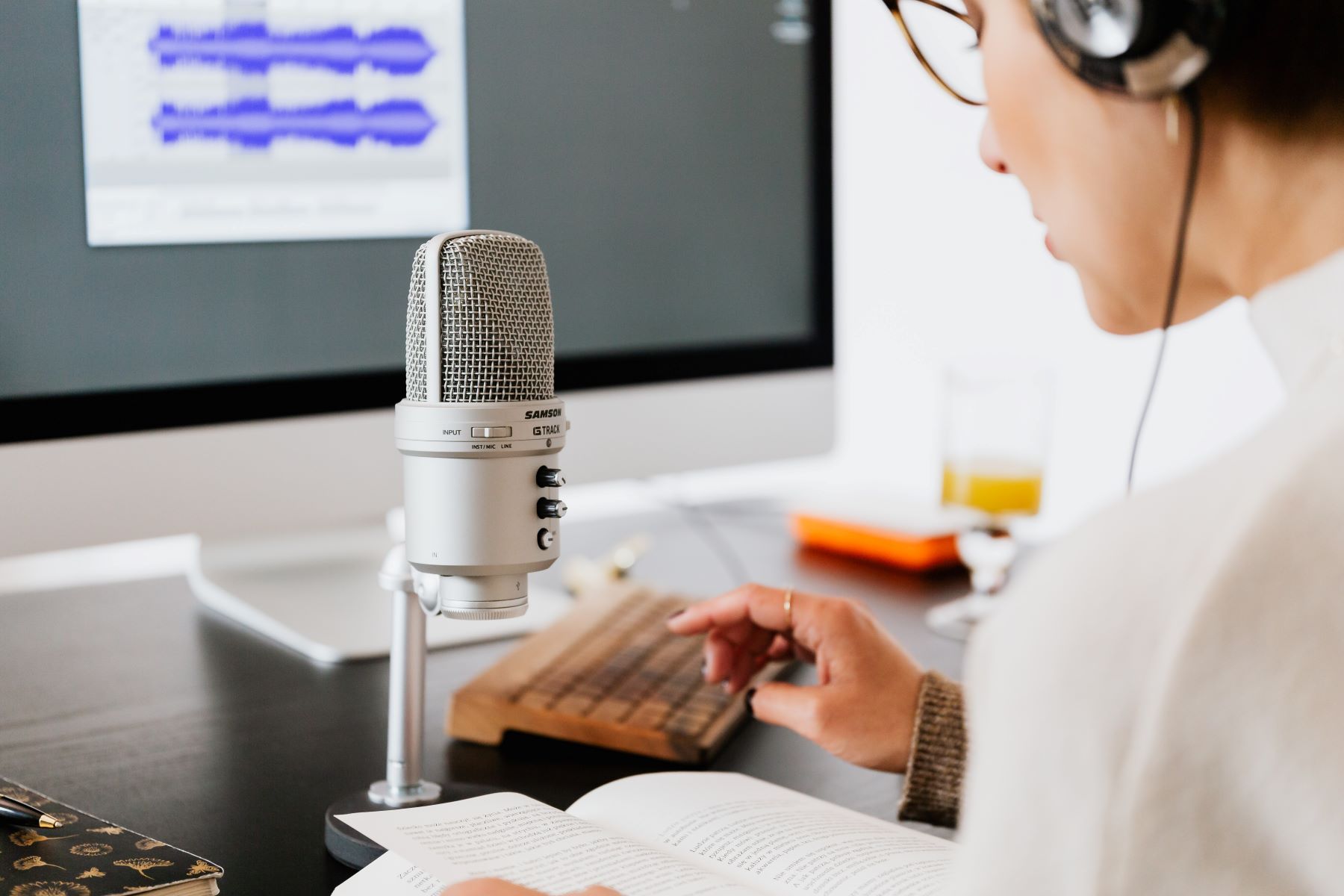Home>Production & Technology>Audiobook>How Long Does It Take To Make An Audiobook


Audiobook
How Long Does It Take To Make An Audiobook
Modified: January 22, 2024
Find out how long it takes to create an engaging audiobook. Unlock insights on the process and timeline of producing an Audiobook.
(Many of the links in this article redirect to a specific reviewed product. Your purchase of these products through affiliate links helps to generate commission for AudioLover.com, at no extra cost. Learn more)
Table of Contents
Introduction
In recent years, the popularity of audiobooks has soared, allowing readers to enjoy their favorite books in a whole new way. With their convenience and accessibility, audiobooks have become a preferred choice for people on the go, commuters, and those with visual impairments. But have you ever wondered how long it takes to create an audiobook? From selecting the book to distribution, the process involves several stages of production and requires careful attention to detail.
Creating an audiobook involves more than just simply reading a book aloud. It requires a dedicated team of professionals, including authors, narrators, audio engineers, and publishers, working together to deliver a high-quality audio experience. Each stage of production plays a crucial role in ensuring that the audiobook meets industry standards and captivates the listener.
In this article, we will explore the various stages involved in creating an audiobook, from choosing the right book to distributing and marketing the final product. By understanding the intricate process behind audiobook production, you’ll gain a deeper appreciation for the hard work and dedication that goes into creating the audio magic that brings stories to life.
Choosing a Book
The first step in creating an audiobook is selecting the right book to adapt into audio format. The choice of the book is critical as it determines the potential success of the audiobook. Publishers and production companies consider various factors when making this decision:
- Popularity: Books that have already gained popularity in their print or digital versions often make for successful audiobooks. Bestselling novels, classics, and well-known nonfiction titles are safe choices that cater to a wide audience.
- Narrative Style: Books with a strong and engaging narrative that translates well into audio format are preferred. Stories with dynamic characters, rich dialogue, and descriptive settings tend to captivate listeners and maintain their interest throughout the audiobook.
- Audience Appeal: Publishers also consider the target audience for the audiobook. They analyze the demographics, interests, and buying preferences of potential listeners to determine if a particular book is suitable for audio adaptation.
- Author/Narrator Connection: Sometimes, the author’s involvement in the narration process can add an extra layer of authenticity and appeal to the audiobook. If the author is a skilled narrator or has a recognizable voice, it can significantly enhance the listening experience.
Once a book is chosen, copyright permissions, licensing agreements, and contracts are obtained to ensure legal compliance. However, it’s important to note that not all books are suitable for audio adaptation. Some books with complex visual elements or heavy reliance on visuals, such as graphic novels or textbooks with lots of diagrams, may not translate well into audio format.
The process of selecting the right book may involve collaboration between publishers, production companies, and even the author themselves. It’s a critical step that sets the foundation for the success of the audiobook production.
Pre-production
Once the book is chosen, the pre-production phase begins. This stage focuses on planning and preparing for the actual recording of the audiobook. It involves several key tasks and considerations:
- Script Adaptation: In order to adapt the book for audio, the script needs to be carefully crafted. This involves condensing or modifying certain sections, removing footnotes or non-essential content, and ensuring that the text is suitable for spoken delivery.
- Casting: Finding the right narrator is crucial to the success of an audiobook. The narrator’s voice, tone, and ability to bring the characters to life play a significant role in engaging the listeners. Casting may involve auditions or discussions with professional narrators.
- Recording Space: A quiet and acoustically treated recording space is essential to ensure high-quality audio. Professional studios or home studios equipped with suitable recording equipment are used to capture the narrator’s voice without any background noise or interference.
- Equipment: Quality recording equipment, including microphones, headphones, and audio interfaces, are used to capture the narrator’s voice with clarity and precision. The equipment should be capable of capturing the full range of sounds and nuances in the narrator’s performance.
- Production Schedule: A detailed production schedule is created, outlining the timeline for recording, editing, and post-production. This helps in managing the workflow and meeting deadlines.
During the pre-production phase, communication between the author, narrator, and production team is crucial. The narrator may work closely with the author to gain insight into the characters, settings, and intonation requirements. Any pronunciations or specific accents are also discussed and clarified.
Effective pre-production planning ensures that the recording process goes smoothly and efficiently, setting the stage for the next stages of audiobook production.
Recording
The recording stage is where the magic truly happens. Once the pre-production phase is complete, the narrator enters the recording booth and brings the words of the book to life. Here’s what happens during the recording process:
- Vocal Warm-up: Before recording, the narrator engages in vocal warm-up exercises to ensure their voice is clear, flexible, and ready for an extended session of reading aloud.
- Chapter by Chapter Recording: The book is typically recorded chapter by chapter. This allows for easier editing and ensures that each chapter gets the narrator’s full attention.
- Audio Performance: The narrator gives a nuanced performance, capturing the emotions, accents, and intonations of the characters. They strive to maintain consistent pacing, tone, and vocal quality throughout the audiobook.
- Retakes and Corrections: If any mistakes or errors occur during recording, retakes are done to ensure the highest possible quality. These retakes may include mispronunciations, stumbling over words, or technical issues.
- Breaks: Recording sessions can be physically and mentally demanding. Accordingly, scheduled breaks are incorporated to allow the narrator to rest and maintain the energy required for a captivating performance.
During the recording process, the audio engineer monitors the recording, ensuring that the sound levels are optimal and that there are no technical issues such as background noise or audio artifacts. They may provide guidance and feedback to the narrator to ensure the best audio quality.
Attention to detail is crucial during recording to capture the essence of the book and create an immersive listening experience. It’s the narrator’s responsibility to draw listeners in and keep them engaged throughout the entire audiobook.
Editing and Post-production
Once the recording is complete, the audiobook enters the editing and post-production phase. This stage focuses on enhancing the audio quality, removing any errors or distractions, and preparing the audiobook for final distribution. Here’s what happens during editing and post-production:
- Audio Editing: The raw recorded audio is carefully edited to ensure a seamless listening experience. This includes removing any mistakes, background noise, or unwanted sounds. The audio is also trimmed to eliminate any pauses or gaps that may disrupt the flow.
- Audio Cleanup: Noise reduction techniques are applied to remove any remaining background noise or hiss. This ensures that the final audio is clean and professional-sounding.
- Chapter Segmentation: The audiobook is segmented into chapters, with appropriate silence and markers inserted between each chapter. This helps listeners navigate the audiobook easily and jump to specific sections if desired.
- Sound Effects and Music: If required by the book or the artistic vision, sound effects or background music may be added during post-production. These elements can enhance the atmosphere and immerse the listeners further into the story.
- Audio Mastering: The final audio is mastered to ensure a consistent volume level and balanced audio across all chapters. This step ensures that the audiobook sounds great regardless of the playback device or platform.
Throughout the editing and post-production process, quality control checks are performed to ensure the highest audio standards. The audiobook is listened to and reviewed carefully, and any remaining issues are addressed, such as incorrect pronunciations or inconsistencies in character voices.
Post-production is a crucial stage, as it transforms the raw audio into a polished and professional audiobook ready for distribution.
Mastering and Quality Control
After the editing and post-production phase, the audiobook enters the mastering and quality control stage. This stage focuses on ensuring the final product meets the highest standards of audio quality and is ready for distribution. Here’s what happens during mastering and quality control:
- Audio Quality Assessment: The entire audiobook is meticulously listened to and assessed for any remaining audio issues, such as clicks, pops, or background noise. The audio quality is carefully evaluated to ensure a consistent and enjoyable listening experience.
- Volume Normalization: The volume levels across the audiobook are normalized to ensure a consistent listening experience. This ensures that listeners don’t need to constantly adjust the volume while enjoying the book.
- Metadata and Tagging: The audiobook is properly tagged and metadata is added, including details about the book, author, narrator, and chapter information. This metadata helps with organization and ease of navigation for the listeners.
- File Formatting: The audiobook files are formatted according to industry standards. This may include converting the audio files to the appropriate file format and ensuring compatibility with various devices and platforms.
- Quality Assurance: Rigorous quality assurance checks are performed to ensure that the final audiobook is free from any technical issues or errors. This includes verifying the accuracy of the audio files, proper synchronization of chapters, and overall audio coherence.
The mastering and quality control stage plays a vital role in delivering a flawless and enjoyable listening experience to the audience. It ensures that all technical aspects of the audiobook align with industry standards and that the final product is of the highest quality.
Once the mastering and quality control phase is complete, the audiobook is ready to be distributed and shared with eager listeners around the world.
Distribution and Marketing
The distribution and marketing stage is crucial to ensure that the audiobook reaches and engages its target audience. It involves making the audiobook available on various platforms and implementing marketing strategies to promote it effectively. Here’s what happens during the distribution and marketing process:
- Distribution Platforms: The audiobook is made available on various digital platforms, including audiobook retailers, online marketplaces, and streaming services. This allows listeners to access the audiobook through their preferred channels and devices.
- Metadata Optimization: The metadata of the audiobook, including the title, author, narrator, and keywords, is optimized to increase its discoverability in search results. This helps potential listeners find the audiobook more easily.
- Promotional Materials: Eye-catching cover art, compelling book descriptions, and engaging sample clips are created to attract potential listeners. These elements are used in marketing materials and promotions to generate interest and drive sales.
- Marketing Campaigns: Marketing efforts, such as social media advertising, email marketing, and collaborations with influencers or book bloggers, are implemented to raise awareness about the audiobook. These campaigns aim to reach a wider audience and generate buzz around the release.
- Reviews and Ratings: Soliciting reviews and encouraging listeners to leave ratings and reviews on platforms like Audible or Goodreads can greatly enhance the visibility and credibility of the audiobook. Positive reviews and high ratings can influence other listeners to give the audiobook a chance.
Additionally, collaborations with book clubs, libraries, and other organizations can help expand the reach of the audiobook and attract new listeners. Making promotional offers, such as discounted pricing or limited-time promotions, can also boost sales and create a sense of urgency among potential listeners.
The distribution and marketing stage is an ongoing process that requires monitoring and adaptation. Analyzing sales data, tracking marketing efforts, and making adjustments based on listener feedback can help optimize the distribution and marketing strategies for maximum impact.
By effectively distributing and marketing the audiobook, it has a higher chance of reaching its target audience and gaining the recognition it deserves.
Conclusion
Creating an audiobook is a complex and multi-faceted process that involves careful planning, skilled narration, meticulous editing, and strategic marketing. From the initial selection of the book to its distribution and marketing, each stage plays a crucial role in delivering a high-quality audiobook that captivates listeners.
Throughout the journey, a team of professionals, including authors, narrators, audio engineers, editors, and marketers, work together to bring the book to life in a new and immersive format. Their expertise and dedication ensure that the audiobook meets industry standards and provides an enjoyable listening experience.
By choosing the right book, preparing for recording, editing and enhancing the audio quality, and executing effective distribution and marketing strategies, audiobooks have the opportunity to reach a wide audience and resonate with listeners.
In the ever-growing world of audiobooks, the process of creating these audio masterpieces continues to evolve. Advancements in technology, changes in consumer preferences, and emerging trends all contribute to shaping the future of audiobook production.
As the demand for audiobooks continues to rise, the creation of high-quality and engaging audio experiences is more important than ever. Through the dedication and expertise of the audiobook production teams, listeners can embark on literary journeys and experience the magic of storytelling wherever they go.
So, the next time you listen to an audiobook, take a moment to appreciate the time, effort, and creativity involved in its production. It’s a testament to the power of words, the art of narration, and the love for storytelling that transcends the printed page.











